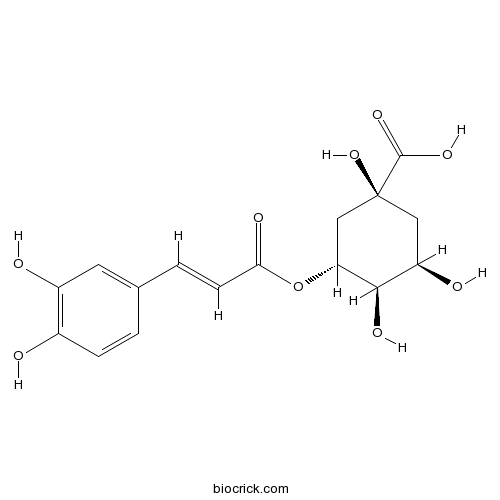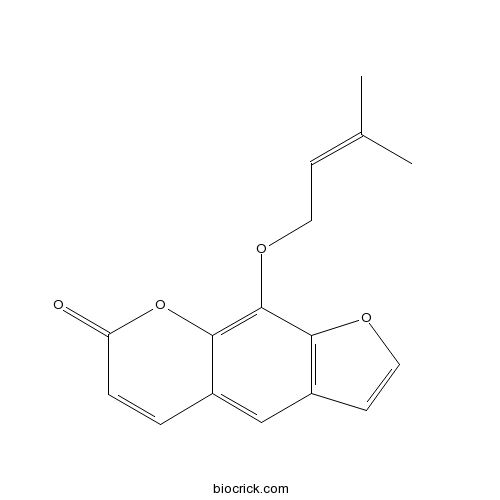Oenanthe javanica
Oenanthe javanica
1. The products in our compound library are selected from thousands of unique natural products; 2. It has the characteristics of diverse structure, diverse sources and wide coverage of activities; 3. Provide information on the activity of products from major journals, patents and research reports around the world, providing theoretical direction and research basis for further research and screening; 4. Free combination according to the type, source, target and disease of natural product; 5. The compound powder is placed in a covered tube and then discharged into a 10 x 10 cryostat; 6. Transport in ice pack or dry ice pack. Please store it at -20 °C as soon as possible after receiving the product, and use it as soon as possible after opening.
Natural products/compounds from Oenanthe javanica
- Cat.No. Product Name CAS Number COA
-
BCN5906
Chlorogenic acid327-97-9
Instructions

-
BCN5574
Imperatorin482-44-0
Instructions

Effects of Coking Wastewater on the Growth of Five Wetland Plant Species.[Pubmed: 29147739]
In order to investigate the effect of wetland plants in the treatment of coking wastewater, Oenanthe javanica (Blume) DC (OC), Artemisia selengensis Turcz. ex Bess. (AB), Echinochloa crusgalli (L.) Beauv. (EB), Brasenia schreberi J.F.Gmel. (BG), and Lythrum salicaria L. (LL) were used to remove ammonia-nitrogen and chemical oxygen demand (COD) from coking wastewater. Results showed high concentrations (> 30%, diluted by deionized water) of coking wastewater caused decreased photosynthetic rate, transpiration rate, and relative growth rate in all studied plants. OC, BG, and LL showed higher adaptability than AB and EB. Wastewater concentrations < 30% resulted in less affected growth of OC, BG, and LL; However, AB and EB were suppressed when coking wastewater concentrations were > 15%. High concentrations of coking wastewater generated oxidative stress which resulted in increased malondialdehyde and proline contents and inhibition of superoxide dismutase. OC, BG, and LL were considered tolerable species in purifying coking wastewater (concentrations < 30%).
An R2R3-MYB transcription factor, OjMYB1, functions in anthocyanin biosynthesis in Oenanthe javanica.[Pubmed: 28965159]
This study showed that an R2R3-MYB transcription factor, OjMYB1, is involved in anthocyanin biosynthesis and accumulation in Oenanthe javanica. Anthocyanins can be used as safe natural food colorants, obtained from many plants. R2R3-MYB transcription factors (TFs) play important roles in anthocyanins biosynthesis during plant development. Oenanthe javanica is a popular vegetable with high nutritional values and numerous medical functions. O. javanica has purple petioles that are mainly due to anthocyanins accumulation. In the present study, the gene encoding an R2R3-MYB TF, OjMYB1, was isolated from purple O. javanica. Sequencing results showed that OjMYB1 contained a 912-bp open reading frame encoding 303 amino acids. Sequence alignments revealed that OjMYB1 contained bHLH-interaction motif ([DE]Lx2[RK]x3Lx6Lx3R) and ANDV motif ([A/G]NDV). Phylogenetic analysis indicated that the OjMYB1 classified into the anthocyanins biosynthesis clade. Subcellular localization assay showed that OjMYB1 was a nuclear protein in vivo. The heterologous expression of OjMYB1 in Arabidopsis could enhance the anthocyanins content and up-regulate the expression levels of the structural genes-related anthocyanins biosynthesis. Yeast two-hybrid assay indicated that OjMYB1 could interact with AtTT8 and AtEGL3 proteins. Enzymatic analysis revealed that overexpression of OjMYB1 gene up-regulated the enzyme activity of 3-O-glycosyltransferase encoded by AtUGT78D2 in transgenic Arabidopsis. Our results provided a comprehensive understanding of the structure and function of OjMYB1 TF in O. javanica.
Isorhamnetin and hyperoside derived from water dropwort inhibits inflammasome activation.[Pubmed: 28160865]
Water dropwort (Oenanthe javanica), an umbelliferous plant, has been reported as hypolipidemic, antiplatelet, antitumor, or immune-stimulating agents and it has been suggested to cure cardiovascular disease and cancer.
Differences in the treatment efficiency of a cold-resistant floating bed plant receiving two types of low-pollution wastewater.[Pubmed: 27071661]
A floating bed system vegetated with Oenanthe javanica was adopted in this study to treat two types of low-pollution wastewater (LPW): polluted river water (PRW) and treated domestic wastewater (DW). The water was treated for 111 days during the low-temperature season. The results indicated that the total nitrogen (TN) removal rates were higher in the DW groups than in the PRW groups during the initial 30 days. This difference may stem from the different C/N ratio of the influent. As the water temperature rose above 15.5 °C after March 12, the purification capability of nitrogen in the DW groups was enhanced, and the removal rates of TN were 89.8 and 76.8 % in DW and the control 2 at 111 days. Conversely, the performance of total phosphorus (TP) removal was robust during the initial stage of the experiment, despite receiving domestic wastewater with a relatively high N/P ratio (16:1). The TP removal rates in DW were as high as 91.5 % compared to 78.9 % in PRW at 30 days. At the same time, the N/P ratios of plant tissue were higher in the DW groups compared to that in the PRW groups. Plant uptake played a significant role in nutrient removal in the PRW groups (52.5 % for TN, 68.2 % for TP), followed by sedimentation. In contrast, plant uptake only accounted for 25.3 % of TN removal and 24.1 % of TP removal in DW. The results provide engineering parameters for the future design of an ecological remediation technology for LPW purification.


